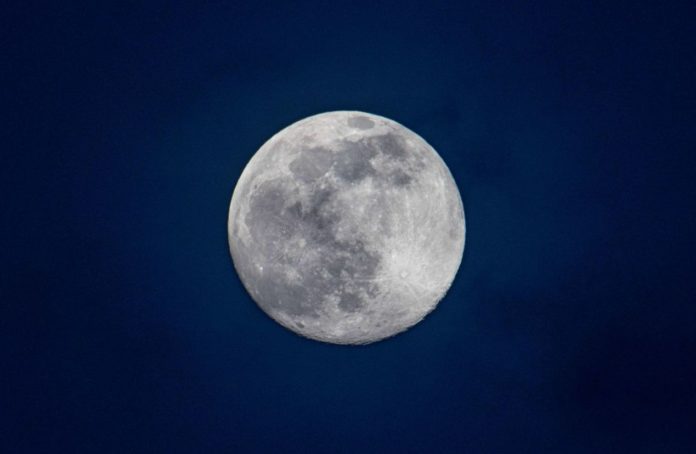Scientists show how the composition of the Moon’s crust could be caused by the freezing of a ‘slushy’ ocean of magma.
The researchers from the University of Cambridge and the Ecole normale supérieure de Lyon presented a new crystallisation model in which crystals remained suspended in liquid magma for hundreds of millions of years as the lunar “slush” cooled and solidified.
Apollo 11 astronauts obtained samples from the lunar Highlands more than fifty years ago. These huge, pale portions of the Moon, visible to the human eye, are made up of anorthosites, which are comparatively light rocks. Anorthosites originated approximately 4.3 and 4.5 billion years ago, early in the Moon’s history.
Similar anorthosites, created by magma crystallization, can be found in Earth’s fossilized magma chambers. However, producing the massive amounts of anorthosite found on the Moon would have forced the creation of a massive global magma ocean.
The Moon, according to scientists, developed when two protoplanets, or embryonic worlds, collided. The Earth was formed from the larger of these two protoplanets, while the Moon was formed from the smaller. The Moon became extremely hot as a result of the collision, to the point that its entire mantle was molten magma, or a magma ocean.
“Since the Apollo era, it has been thought that the lunar crust was formed by light anorthite crystals floating at the surface of the liquid magma ocean, with heavier crystals solidifying at the ocean floor,” says Chloé Michaut, co-author.
“This ‘flotation’ model explains how the lunar Highlands may have formed.”
However, many lunar meteorites have been researched and the surface of the Moon has been intensively studied since the Apollo missions. The composition of lunar anorthosites appears to be more heterogeneous than that of the original Apollo samples, which contradicts a flotation scenario in which all anorthosites are derived from the same liquid ocean.
The anorthosite age range – over 200 million years – is hard to reconcile with an ocean of practically liquid magma whose typical solidification duration is close to 100 million years.
“Given the range of ages and compositions of the anorthosites on the Moon, and what we know about how crystals settle in solidifying magma, the lunar crust must have formed through some other mechanism,” adds Professor Jerome Neufeld, co-author.
To pinpoint this mechanism, Michaut and Neufeld devised a mathematical model.
Crystal settling is difficult in the low lunar gravity, especially when the convecting magma ocean is vigorously stirring it. If the crystals remain floating in a crystal slurry, when the slurry’s crystal content reaches a crucial level, the slurry thickens and sticks together, slowing deformation.
The slushy magma ocean cools at the surface, resulting in a hot, well-mixed slushy interior and a slow-moving, crystal-rich lunar ‘lid.’
“We believe it’s in this stagnant ‘lid’ that the lunar crust formed, as lightweight, anorthite-enriched melt percolated up from the convecting crystalline slurry below,” adds Neufeld. “We suggest that cooling of the early magma ocean drove such vigorous convection that crystals remained suspended as a slurry, much like the crystals in a slushy machine.”
The diversity of enriched lunar surface rocks can be attributed to magma chambers within the lid. The findings show that the creation of the lunar crust took hundreds of millions of years, which is consistent with the dates of lunar anorthosites.
Serial magmatism was offered as a plausible mechanism for the production of lunar anorthosites at first, but the slushy model reconciles this with the idea of a universal lunar magma ocean in the end.
Source: 10.1029/2021GL095408
Image Credit: Getty
You were reading: This ‘flotation’ model explains how Moon’s crust may have formed
